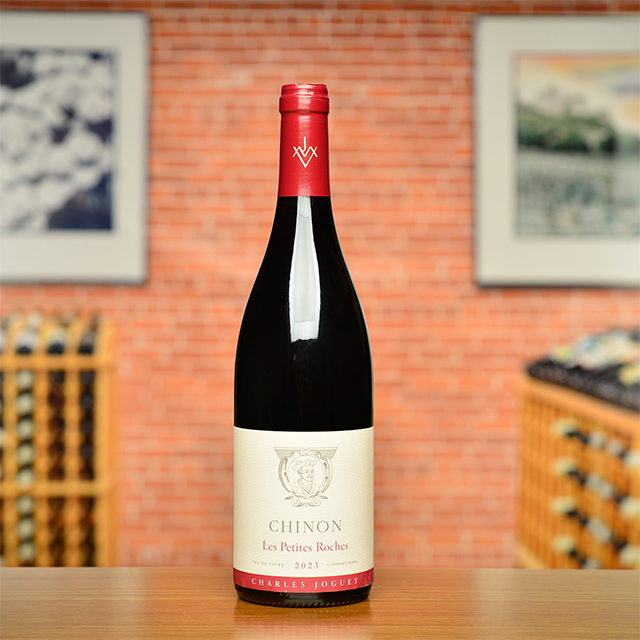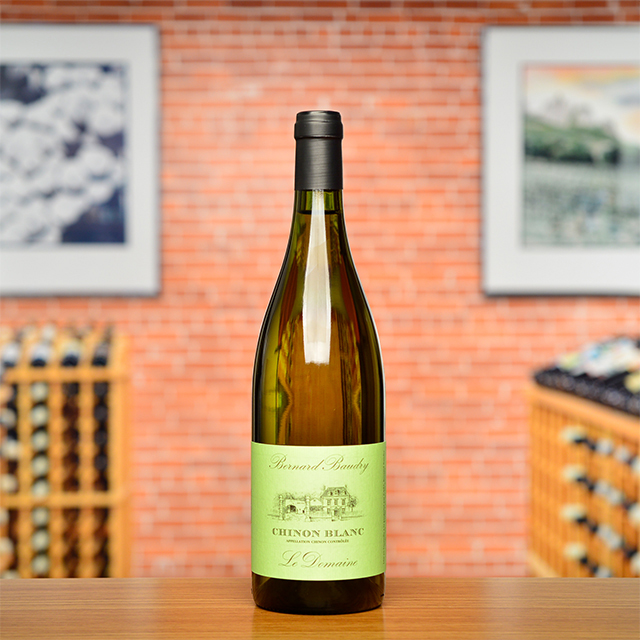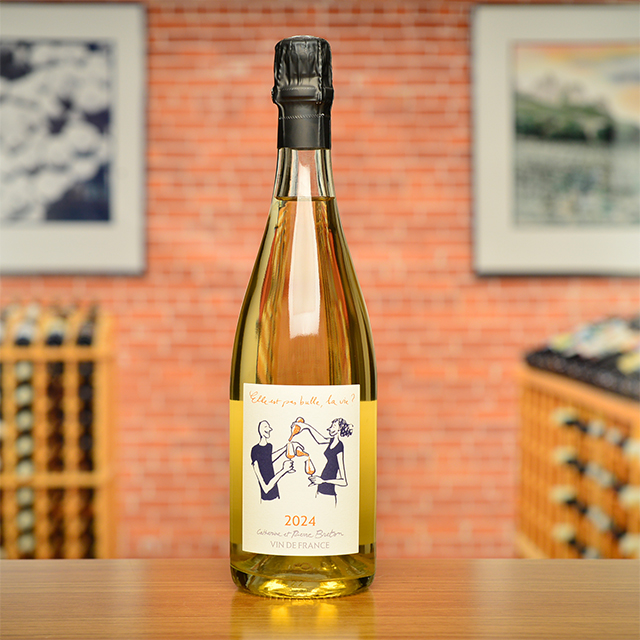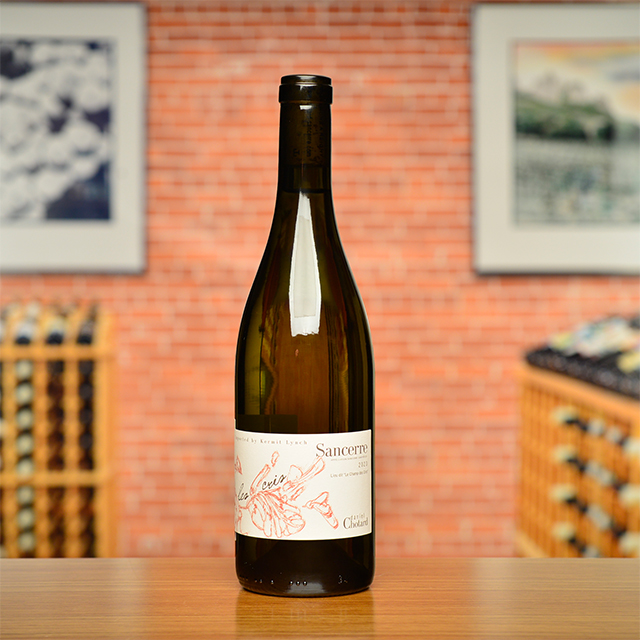Notify me
2023 Anjou Rouge “Clos de la Cerisaie”
Château d'Epiré
Château d’Epiré is a true guardian of Savennières history: for centuries, the property has been the source of profound, age-worthy Chenin Blanc that evokes the local schist soils with utter transparency. But the Anjou region is also Cabernet Franc territory, and as we well know, after every great white a great red must follow. It is only natural, then, that the Bizard family—who has owned Epiré since the 17th century—should make a bit of rouge, too.
Cabernet Franc in this terroir shares certain traits with white Savennières, as one might expect. It is a lively, brisk wine, showcasing pristine red fruit and a hint of herbs over a firm foundation of stony acidity. Unfined and unfiltered, the 2022 satisfies with a velvety fullness and mouth-watering finish.
—Anthony Lynch
| Wine Type: | red |
| Vintage: | 2023 |
| Bottle Size: | 750mL |
| Blend: | Cabernet Franc |
| Appellation: | Savennières |
| Country: | France |
| Region: | Loire |
| Winemaker: | Paul Bizard |
| Vineyard: | Planted in 1973, 1976, 2016, 1.5 ha |
| Soil: | Schist |
| Aging: | Wine ages in 30 hectoliter stainless steel tanks until spring |
| Farming: | Lutte Raisonnée |
| Alcohol: | 13% |
More from this Producer or Region

2023 Bourgueil “Cuvée Alouettes”
France | Loire
June Club Gourmand ~ Vinified with a gentle, terroir-focused touch—few reds will slake your thirst with the ease and finesse of Cuvée Alouettes.

2020 Vin de France Rouge Grolleau/Cabernet Franc “Clandestine”
France | Loire
A lovely combination of Grolleau Noir and Cabernet Franc, there seems to be a synergistic effect elevating both grapes to create a juicy, spicy, refreshing whole.

2023 Reuilly Pinot Noir
France | Loire
Gently perfumed and full of fresh berries with the bright, stony finish typical of wines from Reuilly

2019 Saumur Blanc “Le Clos du Moulin”
France | Loire
Thierry Germain’s meticulous process coaxes out the delicate and aromatic side of Chenin Blanc—think jasmine, honeysuckle, and peach.

2023 Chinon “Les Petites Roches”
France | Loire
Showing off Cabernet in its most delicate, charming form, rife with aromas of roses, damp earth, and little red berries.

2023 Chinon Blanc
France | Loire
A rare Chenin Blanc from the land of Cabernet Franc. Ultra fresh and brimming with citrus blossom and orchard fruit notes, it has a saline, mineral finish that leaves my palate simultaneously satisfied and begging for more. Try it with fresh trout, grilled whole topped with chimichurri or smoked and tossed into a Niçoise salad.

2024 Vin de France Brut Nature “Elle est pas bulle la vie?”
France | Loire
Delicious and honest naturally sparkling Chenin, bottled with no dosage and no sulfur.

2023 Sancerre “Les Cris”
France | Loire
Simply gorgeous, the Cris is sublimely perfumed, generous on the palate, and long and saline on the elegant finish.

2021 Vin de France Blanc “Chenin Centenaire”
France | Loire
Fermented and aged in barrel and bottled unfiltered, it features a delightful kiss of oak on the long, bracing, mouth-watering finish.

2021 Chinon “Le Clos Guillot”
France | Loire
Even though all of the wines hail from Chinon, the soil, elevation, and exposition all combine to make Le Clos Guillot their cuvée with the most finesse.
About The Region
Loire

The defining feature of the Loire Valley, not surprisingly, is the Loire River. As the longest river in France, spanning more than 600 miles, this river connects seemingly disparate wine regions. Why else would Sancerre, with its Kimmeridgian limestone terroir be connected to Muscadet, an appellation that is 250 miles away?
Secondary in relevance to the historical, climatic, environmental, and cultural importance of the river are the wines and châteaux of the Jardin de la France. The kings and nobility of France built many hundreds of châteaux in the Loire but wine preceded the arrival of the noblesse and has since out-lived them as well.
Diversity abounds in the Loire. The aforementioned Kimmeridgian limestone of Sancerre is also found in Chablis. Chinon, Bourgueil, and Saumur boast the presence of tuffeau, a type of limestone unique to the Loire that has a yellowish tinge and a chalky texture. Savennières has schist, while Muscadet has volcanic, granite, and serpentinite based soils. In addition to geologic diversity, many, grape varieties are grown there too: Cabernet Franc, Chenin Blanc, Sauvignon Blanc, and Melon de Bourgogne are most prevalent, but (to name a few) Pinot Gris, Grolleau, Pinot Noir, Pineau d’Aunis, and Folle Blanche are also planted. These myriad of viticultural influences leads to the high quality production of every type of wine: red, white, rosé, sparkling, and dessert.
Like the Rhône and Provence, some of Kermit’s first imports came from the Loire, most notably the wines of Charles Joguet and Château d’Epiré—two producers who are featured in Kermit’s book Adventures on the Wine Route and with whom we still work today.
More from Loire or France
2020 Chinon “Clos du Chêne Vert”
Charles Joguet France | Loire
2021 Saumur-Champigny “Les Mémoires”
Thierry Germain France | Loire
2020 Saumur Champigny “Outre Terre”
Thierry Germain France | Loire
2024 Quincy
Domaine Trotereau France | Loire
2020 Saumur Blanc “Clos Romans”
Thierry Germain France | Loire
2018 Saumur Blanc “L’Échelier”
Thierry Germain France | Loire
2022 Jasnières “Dyane”
Christine de Mianville France | Loire
2021 Chinon “La Croix Boissée”
Bernard Baudry France | Loire
2024 Bourgueil “Trinch!”
Catherine & Pierre Breton France | Loire
2023 Sancerre “Les Coutones”
Daniel Chotard France | Loire
2021 Saumur Blanc “Terres”
Thierry Germain France | Loire
Vouvray Brut
Champalou France | Loire
2020 Chinon “Clos du Chêne Vert”
Charles Joguet France | Loire
2021 Saumur-Champigny “Les Mémoires”
Thierry Germain France | Loire
2020 Saumur Champigny “Outre Terre”
Thierry Germain France | Loire
2024 Quincy
Domaine Trotereau France | Loire
2020 Saumur Blanc “Clos Romans”
Thierry Germain France | Loire
2018 Saumur Blanc “L’Échelier”
Thierry Germain France | Loire
2022 Jasnières “Dyane”
Christine de Mianville France | Loire
2021 Chinon “La Croix Boissée”
Bernard Baudry France | Loire
2024 Bourgueil “Trinch!”
Catherine & Pierre Breton France | Loire
2023 Sancerre “Les Coutones”
Daniel Chotard France | Loire
2021 Saumur Blanc “Terres”
Thierry Germain France | Loire
Vouvray Brut
Champalou France | Loire
Kermit once said...

Kermit once said...
If you're looking for value, look where no one else is looking.
Inspiring Thirst, page 211














